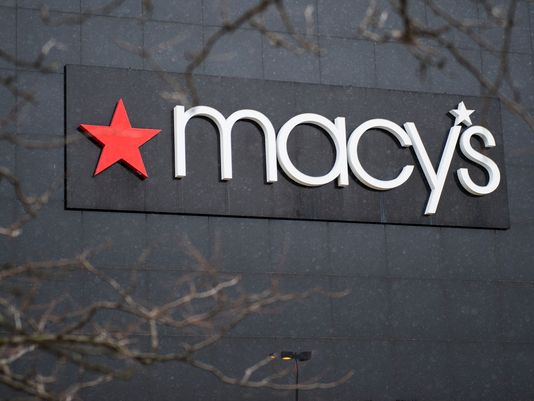
Don’t write off department stores just yet.
Traditional retailing may still be under pressure from online retailers such as Amazon, but results released Wednesday by Macy’s show there’s still plenty of hope as the sector evolves and transforms itself.
Macy’s experienced a sales surge at the start of the year as customers flocked to buy products ranging from perfume to hand bags, boosting the retailer’s profits and defying the low expectations of some industry observers.
Sales were up 4.2% in the first three months of the year, reversing a mostly downward trend the retailer has experienced over the last four years. Macy’s net income was $139 million in the first quarter, up from $78 million in the same quarter last year. The results handily beat expectations of analysts surveyed by S&P Global Intelligence.
“We exceeded our expectations and saw strong performance across all three brands — Macy’s, Bloomingdale’s, and Bluemercury,” Macy’s CEO Jeff Gennette said in a statement. “These positive factors give us confidence to raise both our sales and earnings guidance for the fiscal year.”
For decades, Macy’s was the standard bearer for the elegant department store, but it has been struggling to reinvent itself in an era when convenience is king and customers are increasingly content to tap a keyboard and have shoes, purses and clothing brought to their front door.
The retailer has pared stores and slashed thousands of jobs as it struggles to boost profits. But some industry watchers have fretted that’s not enough. In a note to investors last week, Morgan Stanley said the chain might need to pick up the pace.
“Even though Macy’s is closing stores proactively, it may not be doing so quickly enough,” the note said.
Overall sales are predicted by management to be flat or slightly down this year. Yet Macy’s is succeeding by playing to the basics, such as its loyalty program.
The retailer’s new Star Reward loyalty program is paying off, with its highest-level members spending more. And last week, the program began including customers even if they did not have or use a Macy’s credit card.
Macy’s Backstage, the retailer’s off-price concept that sees especially brisk sales in the shoe and home categories, continues to expand. With the goal of opening roughly 100 more locations this year, the retailer unveiled 18 new stores in the first three months of 2018 and plans to launch roughly 40 more in the second quarter.
Macy’s is also aiming to better compete with Amazon, as well as its traditional retail peers, by bringing technology to its aisles, and trying to make the in-store experience as much of a draw for customers as the clothing and accessories lining the racks and shelves.
By the end of this year, shoppers at all Macy’s stores will be able to use their smartphones to scan and pay for most products with the store’s app.
It’s also rolling out an augmented-reality furniture shopping feature that will enable customers to picture couches and other pieces of furniture inside their actual homes — an experience slated to be available at 60 locations by fall. An augmented-reality feature is also being made available on the mobile app.
The company also recently bought Story, a Manhattan shop that regularly rotates its look and merchandise, similar to the changing exhibitions at an art gallery or features in a magazine. And Macy’s has brought Story’s founder and CEO onto its leadership team to improve the in-store experience for shoppers.
“We’re in the experience business,” Gennette said in an earnings call with investors Wednesday, in which he also noted that “this is the most competitive retail environment that I’ve ever seen.’’
Neil Saunders, managing director of retail consultancy GlobalData, said in a note that Macy’s “sales uplifts are particularly impressive’’ and praised various steps taken by the retailer, including better monitoring of its amount of merchandise and a focus on its e-commerce business as well as stores.
But Saunders cautioned that a popular promotion that helped drive sales in the last quarter will be in the rear view mirror in coming months. Competition among retailers remains fierce, and there are other headwinds that could slow the store chain’s growth.
“Taken in concert,” he wrote “this suggests that performance may well deteriorate.”